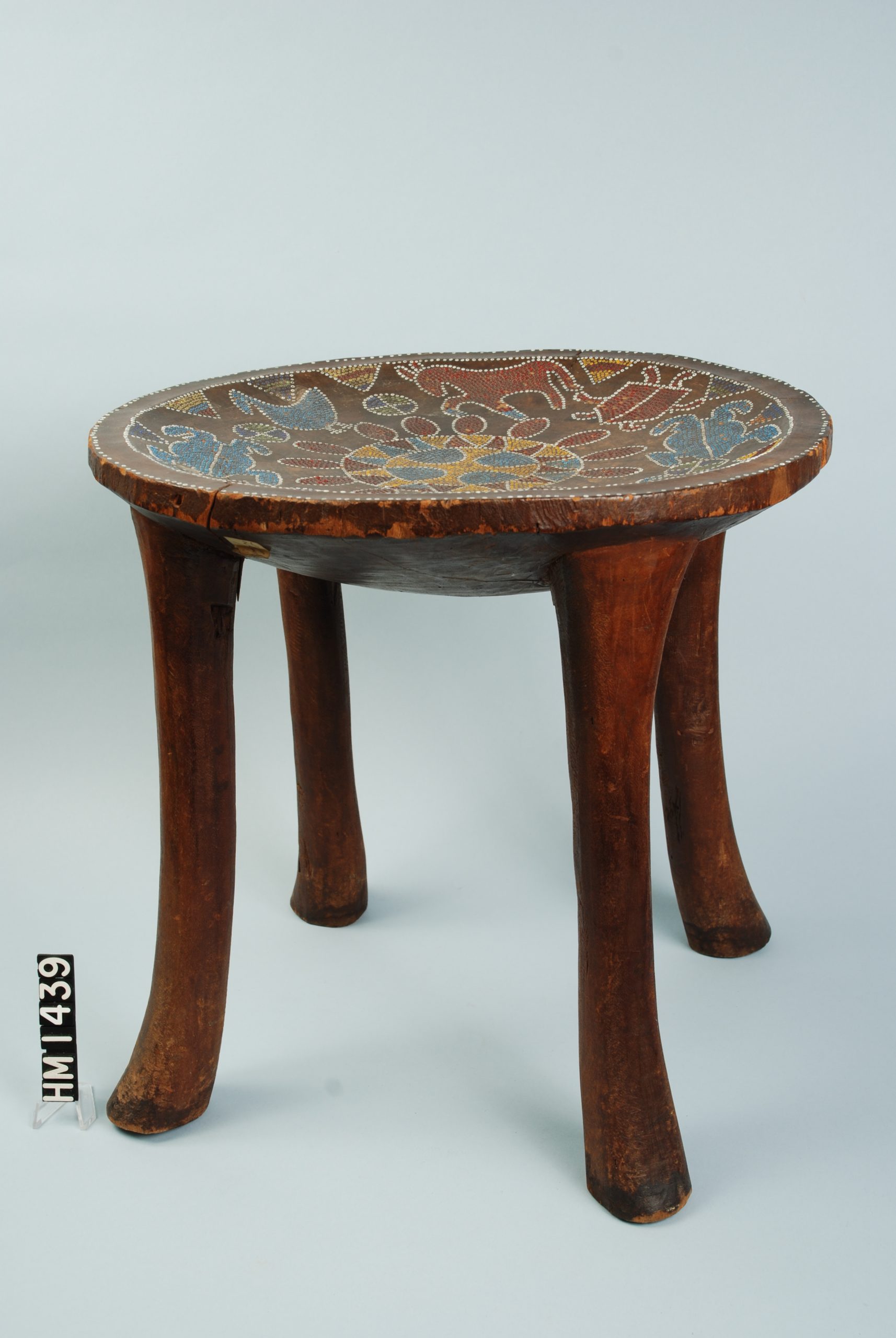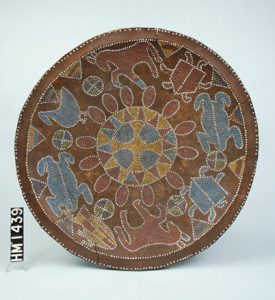Hudson Museum Scavenger Hunt: Bamileki Stool

Who made this?
This stool is a status symbol belonging to the Bamileke tribe of the Bamenda Grassfields of Cameroon.
Significance of the stool:
Physically elevating somebody from the ground, Bamileke stools were used by important people. These include the king, known as “The Fon,” chiefs, and women who were known as “Ma Fo.” These stools were decorated with animals and shapes, the leopard being the most important, representing the speed and strength of the Fon.
What is it made of?
Handcrafted from teum wood, Bamileke stools are waterproof and sturdy. Ensuring each stool was unique, they were painted and beads were pressed into the wood. The more intricate and colorful the artwork was, the more significant and powerful the owner was.

The Symbols of this stool:
Decorated with many depictions of animals with a significant amount of beads, the owner of this stool was likely quite important or wealthy. Triangles are a symbol of power, many of which can be found on this stool. The numerous animals are likely a representation of wealth and abundance.
Bamileke Stools Today
Lacking the traditional intricate art and beadwork, many modern Bamileke stools represent the spider or cowrie. These animals have no royal connotation, making these stools less significant and more for practical use.
To find the next code:
Head back toward the Inuit kayak. Look for a simple green object in the corner of the case on your left. You can scan the QR code when you find it, or click here to continue.
